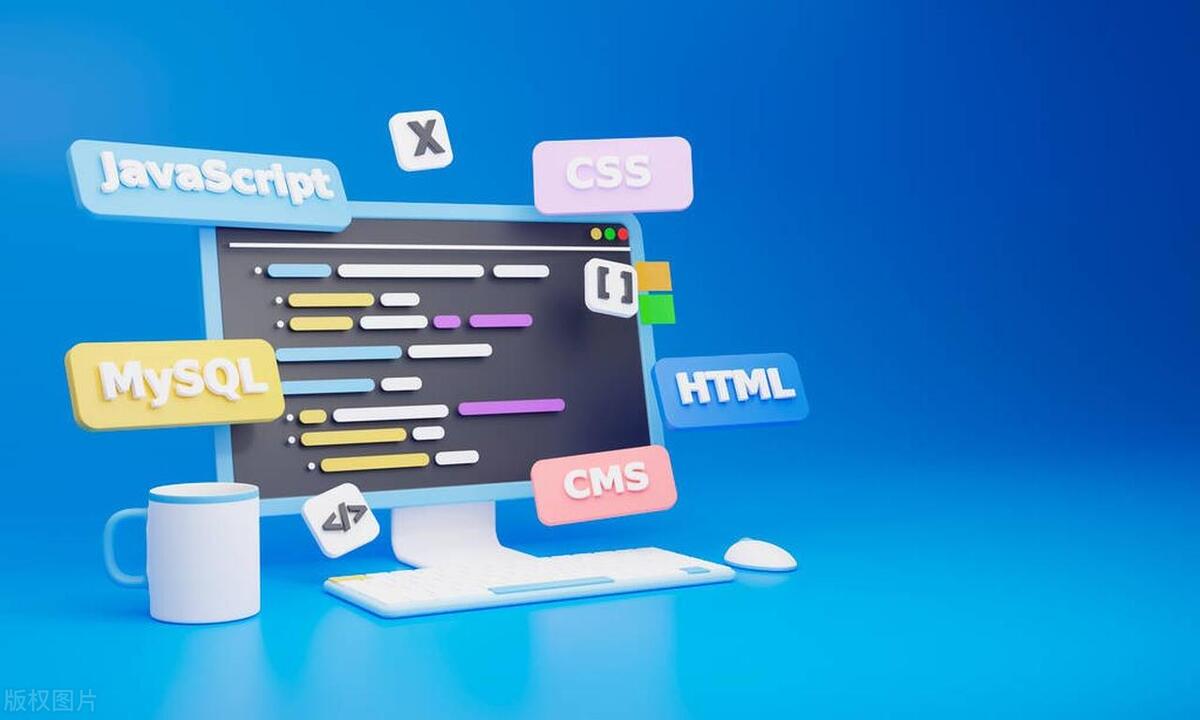React Server Components vs. Client Components: A Complete Guide
Oct 12, 2025 am 02:40 AMServer Components are rendered on the server, do not increase the size of the client, and are suitable for data acquisition and static content; Client Components run in the browser, supporting interaction and state management. 1. Server Components cannot use hooks such as useState and can directly access the database; 2. Client Components need to be declared with 'use client' to handle events and side effects; 3. Client components can be embedded in server components, but not vice versa; 4. Prioritize using Server Components to reduce JS packaging volume and improve performance; 5. Use Client Components when interaction is required. Only by correct division of labor can the advantages of React's new architecture be brought into play.

React Server Components (RSC) and Client Components are two component models introduced in React 18. They are essentially different in rendering timing, running environment, and usage scenarios. Understanding their differences and how they work together is critical to building high-performance, maintainable, modern React applications.

What are Server Components and Client Components?
Server Components
- Rendering on the server does not consume the client's JavaScript package size .
- Hooks such as
useStateanduseEffectcannot be used because they do not run in the browser. - Backend resources (such as databases, file systems) can be accessed directly without additional API calls.
- The rendering results are sent to the client in a lightweight JSON structure, which is "reorganized" into DOM by React on the client side.
Client Components

- Running in the browser, interactive logic (event handling, state management, side effects, etc.) can be used.
- Will increase the packaging size, each imported library or Hook will be included in the JS bundle.
- Suitable for handling user interaction, animation, browser API (such as localStorage), etc.
? Simply put:
- Server Components: Responsible for data acquisition and static content rendering (faster and lighter)
- Client Components: responsible for interaction and dynamic behavior
How to distinguish Server and Client Components?
Starting with React 18, Next.js (App Router) is distinguished by a file naming convention:

- Server Component (default) : ordinary
.js/.tsxfile, no special tags. - Client Component : The
'use client'directive must be written at the top of the file.
// ClientComponent.tsx
'use client';
import { useState } from 'react';
export default function Counter() {
const [count, setCount] = useState(0);
return <button onClick={() => setCount(count 1)}>{count}</button>;
} // ServerComponent.tsx
import ClientComponent from './ClientComponent';
import { fetchData } from './api';
export default async function ServerComponent() {
const data = await fetchData(); // Call return directly on the server (
<div>
<h1>{data.title}</h1>
<ClientComponent /> {/* Embed client component*/}
</div>
);
}? Notice:
- Client components can be embedded in server components, but not the other way around.
'use client'must be the first line of the file (even if there is a comment before it).
Comparison of core advantages
| characteristic | Server Components | Client Components |
|---|---|---|
| Operating environment | server | Browser |
| Packet volume impact | ? No increase | ? Increase |
| Use status/event | ? Not supported | ? Support |
| Access database/API | ? Can be called directly | ? Need to fetch |
| SEO friendly | ?Natural support | ?? Depends on SSR or SSG |
| Interoperability | ? Static content only | ? Fully interactive |
Practical suggestions for use: How to choose?
? Prioritize using Server Components when:
- Mainly display content (articles, product details, lists)
- Need to get data from database or CMS
- Use large libraries (such as Markdown parsers, charting tools), but no interaction is required
- Want to reduce client side loading time (TTFB is faster, JS is less)
? Use Client Components when:
- Requires
useState,useEffect, custom Hook - There are interactions such as button clicks, form submissions, and animations.
- Depends on browser API (
window,localStorage,navigator) - Use third-party UI libraries (such as Tailwind UI, Radix components)
Common misunderstandings and precautions
Myth 1: Server Components = SSR
Not entirely true. SSR (Server Side Rendering) renders the entire page into HTML on the server side, but all components are still downloaded to the client to "hydrate". RSC only runs some components on the server side and never transmits them to the client .Misunderstanding 2: Server Components cannot pass props to Client Components
Can! But note:- The props passed must be serializable (functions, Date, Map, etc. cannot be passed)
- Functions need to be handled indirectly through
useActionStateor event callbacks
Performance Pitfall: Overuse of Client Components
If the entire page is made into a Client Component, it will degenerate into a traditional SPA and lose the advantages of RSC. Try to move non-interactive parts to Server Component.
Best practice examples
// app/page.tsx - Server Component
import ProductList from './ProductList'; // Client Component
import { getProducts } from '@/lib/database';
export default async function Home() {
const products = await getProducts(); // Check the database directly return (
<main>
<h1>Product list</h1>
<ProductList products={products} />
</main>
);
} // app/ProductList.tsx - Client Component
'use client';
import { useState } from 'react';
export default function ProductList({ products }) {
const [filter, setFilter] = useState('');
const filtered = products.filter(p =>
p.name.includes(filter)
);
return (
<div>
<input
value={filter}
onChange={(e) => setFilter(e.target.value)}
placeholder="Search products"
/>
<ul>
{filtered.map(p => (
<li key={p.id}>{p.name}</li>
))}
</ul>
</div>
);
} That's basically it.
The key is not "which one is better", but "who is better suited to do what". Only through a reasonable division of labor, allowing Server Components to be responsible for data and content, and Client Components to be responsible for interaction, can the maximum power of React's new architecture be unleashed.
The above is the detailed content of React Server Components vs. Client Components: A Complete Guide. For more information, please follow other related articles on the PHP Chinese website!

Hot AI Tools

Undress AI Tool
Undress images for free

Undresser.AI Undress
AI-powered app for creating realistic nude photos

AI Clothes Remover
Online AI tool for removing clothes from photos.

ArtGPT
AI image generator for creative art from text prompts.

Stock Market GPT
AI powered investment research for smarter decisions

Hot Article

Hot Tools

Notepad++7.3.1
Easy-to-use and free code editor

SublimeText3 Chinese version
Chinese version, very easy to use

Zend Studio 13.0.1
Powerful PHP integrated development environment

Dreamweaver CS6
Visual web development tools

SublimeText3 Mac version
God-level code editing software (SublimeText3)
 React's Ecosystem: Libraries, Tools, and Best Practices
Apr 18, 2025 am 12:23 AM
React's Ecosystem: Libraries, Tools, and Best Practices
Apr 18, 2025 am 12:23 AM
The React ecosystem includes state management libraries (such as Redux), routing libraries (such as ReactRouter), UI component libraries (such as Material-UI), testing tools (such as Jest), and building tools (such as Webpack). These tools work together to help developers develop and maintain applications efficiently, improve code quality and development efficiency.
 The Future of React: Trends and Innovations in Web Development
Apr 19, 2025 am 12:22 AM
The Future of React: Trends and Innovations in Web Development
Apr 19, 2025 am 12:22 AM
React's future will focus on the ultimate in component development, performance optimization and deep integration with other technology stacks. 1) React will further simplify the creation and management of components and promote the ultimate in component development. 2) Performance optimization will become the focus, especially in large applications. 3) React will be deeply integrated with technologies such as GraphQL and TypeScript to improve the development experience.
 React: The Power of a JavaScript Library for Web Development
Apr 18, 2025 am 12:25 AM
React: The Power of a JavaScript Library for Web Development
Apr 18, 2025 am 12:25 AM
React is a JavaScript library developed by Meta for building user interfaces, with its core being component development and virtual DOM technology. 1. Component and state management: React manages state through components (functions or classes) and Hooks (such as useState), improving code reusability and maintenance. 2. Virtual DOM and performance optimization: Through virtual DOM, React efficiently updates the real DOM to improve performance. 3. Life cycle and Hooks: Hooks (such as useEffect) allow function components to manage life cycles and perform side-effect operations. 4. Usage example: From basic HelloWorld components to advanced global state management (useContext and
 Understanding React's Primary Function: The Frontend Perspective
Apr 18, 2025 am 12:15 AM
Understanding React's Primary Function: The Frontend Perspective
Apr 18, 2025 am 12:15 AM
React's main functions include componentized thinking, state management and virtual DOM. 1) The idea of ??componentization allows splitting the UI into reusable parts to improve code readability and maintainability. 2) State management manages dynamic data through state and props, and changes trigger UI updates. 3) Virtual DOM optimization performance, update the UI through the calculation of the minimum operation of DOM replica in memory.
 React and Frontend Development: A Comprehensive Overview
Apr 18, 2025 am 12:23 AM
React and Frontend Development: A Comprehensive Overview
Apr 18, 2025 am 12:23 AM
React is a JavaScript library developed by Facebook for building user interfaces. 1. It adopts componentized and virtual DOM technology to improve the efficiency and performance of UI development. 2. The core concepts of React include componentization, state management (such as useState and useEffect) and the working principle of virtual DOM. 3. In practical applications, React supports from basic component rendering to advanced asynchronous data processing. 4. Common errors such as forgetting to add key attributes or incorrect status updates can be debugged through ReactDevTools and logs. 5. Performance optimization and best practices include using React.memo, code segmentation and keeping code readable and maintaining dependability
 Using React with HTML: Rendering Components and Data
Apr 19, 2025 am 12:19 AM
Using React with HTML: Rendering Components and Data
Apr 19, 2025 am 12:19 AM
Using HTML to render components and data in React can be achieved through the following steps: Using JSX syntax: React uses JSX syntax to embed HTML structures into JavaScript code, and operates the DOM after compilation. Components are combined with HTML: React components pass data through props and dynamically generate HTML content, such as. Data flow management: React's data flow is one-way, passed from the parent component to the child component, ensuring that the data flow is controllable, such as App components passing name to Greeting. Basic usage example: Use map function to render a list, you need to add a key attribute, such as rendering a fruit list. Advanced usage example: Use the useState hook to manage state and implement dynamics
 Vue.js vs. React: Comparing Performance and Efficiency
Apr 28, 2025 am 12:12 AM
Vue.js vs. React: Comparing Performance and Efficiency
Apr 28, 2025 am 12:12 AM
Vue.js and React each have their own advantages: Vue.js is suitable for small applications and rapid development, while React is suitable for large applications and complex state management. 1.Vue.js realizes automatic update through a responsive system, suitable for small applications. 2.React uses virtual DOM and diff algorithms, which are suitable for large and complex applications. When selecting a framework, you need to consider project requirements and team technology stack.
 The Power of React in HTML: Modern Web Development
Apr 18, 2025 am 12:22 AM
The Power of React in HTML: Modern Web Development
Apr 18, 2025 am 12:22 AM
The application of React in HTML improves the efficiency and flexibility of web development through componentization and virtual DOM. 1) React componentization idea breaks down the UI into reusable units to simplify management. 2) Virtual DOM optimization performance, minimize DOM operations through diffing algorithm. 3) JSX syntax allows writing HTML in JavaScript to improve development efficiency. 4) Use the useState hook to manage state and realize dynamic content updates. 5) Optimization strategies include using React.memo and useCallback to reduce unnecessary rendering.




